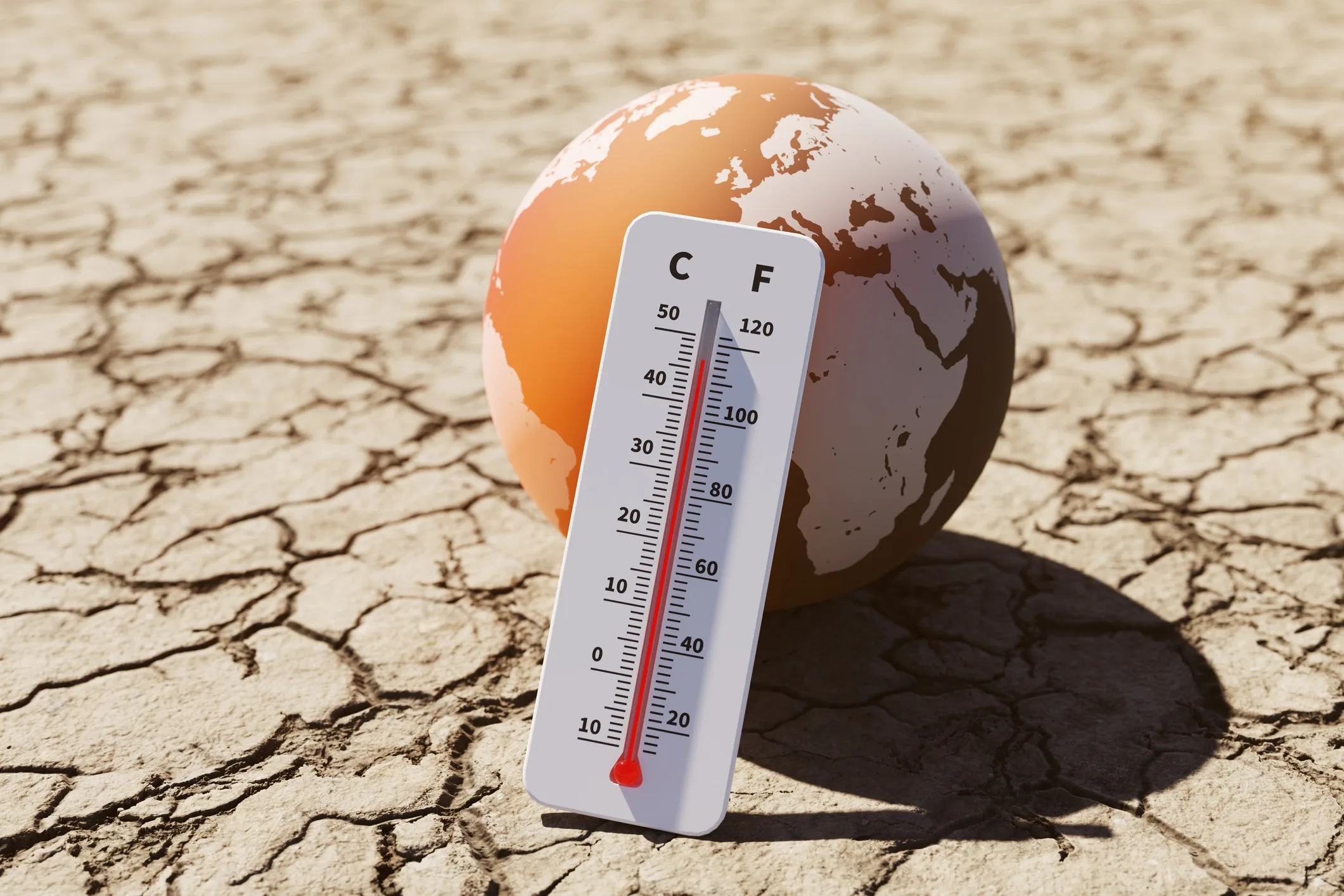Home>Weather and Climate>Exploring The Average Temperature In Australia: A Comprehensive Guide


Weather and Climate
Exploring The Average Temperature In Australia: A Comprehensive Guide
Published: April 8, 2024
Discover the average temperature in Australia and gain insights into its weather and climate. Explore this comprehensive guide for valuable information.
(Many of the links in this article redirect to a specific reviewed product. Your purchase of these products through affiliate links helps to generate commission for Temperatures.com, at no extra cost. Learn more)
Table of Contents
- Understanding the Climate Zones in Australia
- Factors Affecting the Average Temperature in Australia
- Historical Trends of Average Temperature in Australia
- Impact of Climate Change on Australia's Average Temperature
- Regional Variations in Average Temperature across Australia
- Seasonal Changes in Average Temperature in Australia
- The Future Outlook for Australia's Average Temperature
Understanding the Climate Zones in Australia
Australia, known for its diverse landscapes and unique wildlife, is also characterized by a wide range of climate zones. These climate zones play a pivotal role in shaping the country's weather patterns and average temperatures. Understanding these zones provides valuable insights into the varying climatic conditions experienced across different regions of Australia.
-
Tropical Zone: Located in the northern part of the country, the tropical zone experiences consistently high temperatures throughout the year. This region is characterized by lush rainforests, vibrant biodiversity, and a distinct wet and dry season. The average temperatures in this zone remain relatively high, with minimal fluctuations between seasons.
-
Subtropical Zone: Stretching along the eastern coast of Australia, the subtropical zone is renowned for its temperate climate and moderate rainfall. This region experiences warm to hot summers and mild winters, making it an ideal environment for diverse flora and fauna. The average temperatures in the subtropical zone exhibit a noticeable variation between summer and winter months.
-
Desert and Arid Zone: Central Australia is dominated by vast desert landscapes and arid regions, where extreme temperatures and minimal rainfall prevail. The scorching heat during the day and chilly nights contribute to the distinctive climate of this zone. The average temperatures in the desert and arid zone showcase significant diurnal variations, with soaring daytime heat and dramatic nighttime cooling.
-
Temperate Zone: The southern regions of Australia fall within the temperate zone, characterized by four distinct seasons. This zone experiences relatively mild summers and cool winters, with moderate rainfall distributed throughout the year. The average temperatures in the temperate zone fluctuate noticeably as the seasons transition, offering a diverse climate suitable for a variety of ecosystems.
-
Alpine Zone: Found in the mountainous regions of southeastern Australia, the alpine zone exhibits cooler temperatures and significant snowfall during the winter months. This unique climate fosters alpine vegetation and supports winter sports activities. The average temperatures in the alpine zone reflect a stark contrast to the warmer regions of the country, showcasing the impact of elevation on climate.
Understanding the diverse climate zones in Australia provides a comprehensive perspective on the country's climatic diversity. From the tropical north to the temperate south, each zone contributes to the rich tapestry of Australia's weather and average temperatures, shaping the unique environmental conditions experienced across the continent.
Factors Affecting the Average Temperature in Australia
The average temperature in Australia is influenced by a myriad of factors that collectively contribute to the diverse climatic conditions experienced across the continent. Understanding these factors is crucial in unraveling the complexities of Australia's temperature patterns and their implications for the environment and society.
-
Latitude and Geographic Location: Australia's vast expanse spans from the tropics in the north to the temperate zones in the south. This wide latitudinal range significantly impacts the average temperature, with the northern regions experiencing consistently warmer climates compared to the cooler southern areas. The geographic location of Australia also influences the distribution of temperature, with coastal regions benefiting from moderating maritime influences, while inland areas are subject to more extreme temperature fluctuations.
-
Ocean Currents and Sea Surface Temperatures: The surrounding oceans play a pivotal role in shaping Australia's climate. The influence of ocean currents, such as the warm Leeuwin Current and the cool East Australian Current, contributes to the regional variations in temperature along the coastline. Additionally, sea surface temperatures impact the moisture content and atmospheric circulation, influencing the temperature patterns across the continent.
-
Topography and Elevation: The diverse topography of Australia, encompassing expansive deserts, mountain ranges, and coastal plains, exerts a significant influence on temperature patterns. Elevation plays a crucial role, with higher altitudes experiencing cooler temperatures, while low-lying areas are subjected to higher heat levels. The presence of mountain ranges also contributes to the formation of localized climate systems, further impacting average temperatures.
-
Atmospheric Circulation and Weather Systems: Australia's position in the Southern Hemisphere exposes it to unique atmospheric circulation patterns, including the influence of the Southern Annular Mode and the El Niño-Southern Oscillation. These large-scale weather phenomena influence temperature and precipitation patterns, leading to periods of drought, heatwaves, or cooler conditions across different regions of the country.
-
Land Use and Urbanization: Human activities, including urbanization and land use changes, have a discernible impact on local temperature patterns. Urban heat islands, characterized by higher temperatures in urbanized areas compared to surrounding rural regions, are a result of human infrastructure and activities. These localized temperature effects contribute to the overall average temperature in Australia's urbanized areas.
-
Climate Change and Greenhouse Gas Emissions: The global phenomenon of climate change, driven by greenhouse gas emissions, has far-reaching implications for Australia's average temperature. Rising greenhouse gas concentrations contribute to long-term warming trends, leading to shifts in temperature patterns, altered precipitation regimes, and increased frequency of extreme weather events.
Understanding the intricate interplay of these factors provides valuable insights into the dynamic nature of Australia's average temperature. By considering the complex web of influences, scientists and policymakers can better comprehend the evolving climate trends and develop strategies to mitigate the impacts of changing temperatures on the environment and society.
Historical Trends of Average Temperature in Australia
The historical trends of average temperature in Australia offer a compelling narrative of the country's climatic evolution over the past century. Through meticulous analysis of temperature records and scientific data, researchers have unveiled noteworthy patterns that underscore the impact of global and regional influences on Australia's climate.
During the early 20th century, Australia experienced a phase of relatively stable average temperatures, with localized variations attributed to natural climate oscillations. However, as the century progressed, a discernible warming trend emerged, marking a pivotal shift in the country's temperature dynamics. The latter half of the 20th century witnessed a notable acceleration in the rate of temperature increase, signaling the onset of significant climatic changes.
The comprehensive analysis of historical temperature data has revealed a consistent trajectory of warming across various regions of Australia. Coastal areas, in particular, have exhibited amplified warming trends, influenced by the interplay of oceanic and atmospheric factors. Moreover, inland regions have also experienced pronounced temperature shifts, reflecting the intricate balance between natural variability and anthropogenic influences.
The impact of urbanization on temperature records is evident, with urban heat island effects contributing to localized temperature anomalies in metropolitan areas. This phenomenon underscores the complex interaction between human activities and climatic patterns, emphasizing the need for holistic approaches to temperature monitoring and analysis.
Furthermore, the historical trends of average temperature in Australia have unveiled a heightened frequency of extreme heat events, with record-breaking temperatures becoming more prevalent in recent decades. These extreme events pose significant challenges to public health, agriculture, and natural ecosystems, underscoring the urgency of adapting to a changing climate.
The historical trends of average temperature in Australia serve as a crucial foundation for understanding the evolving climate dynamics and formulating proactive strategies to address the multifaceted impacts of rising temperatures. By delving into the historical temperature records, scientists and policymakers gain valuable insights into the complex interplay of natural variability and human-induced climate change, paving the way for informed decision-making and adaptive measures to safeguard Australia's environmental resilience and societal well-being.
Impact of Climate Change on Australia's Average Temperature
The impact of climate change on Australia's average temperature has been profound and far-reaching, reshaping the country's climatic landscape with discernible consequences. As global temperatures continue to rise due to the accumulation of greenhouse gases in the atmosphere, Australia has been particularly susceptible to the ramifications of this planetary shift.
One of the most striking manifestations of climate change is the intensification of heatwaves across Australia. The average temperature has exhibited a notable upward trend, leading to an escalation in the frequency, duration, and intensity of heatwaves. These prolonged periods of extreme heat pose significant risks to public health, agricultural productivity, and ecological balance. Moreover, the exacerbation of heatwaves amplifies the vulnerability of vulnerable populations and exacerbates the challenges associated with heat-related illnesses and heat stress.
The influence of climate change on Australia's average temperature is also evident in the alteration of precipitation patterns. As temperatures rise, the hydrological cycle undergoes perturbations, leading to shifts in rainfall distribution and intensity. Certain regions experience heightened aridity, exacerbating drought conditions and water scarcity, while others contend with intensified rainfall and heightened flood risks. These changes in precipitation patterns have profound implications for agricultural practices, water resource management, and ecosystem dynamics, necessitating adaptive strategies to mitigate the impacts of altered rainfall regimes.
Furthermore, the warming of Australia's average temperature has implications for marine environments, particularly the iconic Great Barrier Reef. Elevated sea surface temperatures, driven by global climate change, have contributed to coral bleaching events, posing a severe threat to the ecological integrity of this natural wonder. The repercussions of rising temperatures extend beyond the marine realm, affecting terrestrial ecosystems, biodiversity, and the delicate balance of natural habitats.
The compounding effects of climate change on Australia's average temperature underscore the urgency of implementing robust mitigation and adaptation measures. By addressing the root causes of climate change and bolstering resilience to its impacts, Australia can strive to safeguard its environmental heritage, protect vulnerable communities, and foster sustainable development in the face of a changing climate.
The impact of climate change on Australia's average temperature serves as a clarion call for concerted action, underlining the imperative of global cooperation and proactive initiatives to mitigate greenhouse gas emissions, enhance climate resilience, and preserve the ecological richness of the continent.
Regional Variations in Average Temperature across Australia
Australia's vast expanse encompasses a diverse array of climatic regions, each characterized by distinct variations in average temperature. From the tropical north to the temperate south, and the arid interior to the coastal fringes, the regional differences in average temperature paint a vivid tapestry of climatic diversity across the continent.
In the tropical northern regions, including the Kimberley and the Top End, the average temperatures remain consistently high throughout the year. The tropical climate fosters sweltering heat and high humidity, creating an environment conducive to lush rainforests and diverse wildlife. The absence of distinct seasonal variations in average temperature distinguishes the tropical north from other regions, offering a unique climatic experience.
Moving southward, the subtropical zones along the eastern coast, encompassing cities such as Brisbane and Sydney, exhibit moderate average temperatures characterized by warm to hot summers and mild winters. The temperate climate supports a rich tapestry of flora and fauna, with the coastal proximity influencing maritime influences on temperature patterns.
In contrast, the arid and semi-arid interior, including the iconic Outback, experiences extreme temperature differentials, with scorching daytime heat and dramatic nighttime cooling. The arid climate contributes to the formation of expansive deserts and arid landscapes, where the average temperatures reflect the harsh and unforgiving nature of the terrain.
The temperate southern regions, such as Melbourne and Adelaide, showcase distinct seasonal variations in average temperature, with relatively mild summers and cool winters. This climatic diversity supports a wide range of ecosystems, from temperate forests to coastal heathlands, shaping the environmental dynamics of the region.
Moreover, the alpine regions of southeastern Australia, including the Snowy Mountains, exhibit cooler average temperatures and significant snowfall during the winter months. The alpine climate fosters unique vegetation and provides a haven for winter sports enthusiasts, offering a stark contrast to the warmer climates prevalent in other parts of the country.
The regional variations in average temperature across Australia underscore the country's climatic complexity, influenced by a myriad of factors including latitude, topography, and oceanic influences. Understanding these regional nuances is pivotal in appreciating the diverse environmental conditions that define Australia's landscape, highlighting the intricate interplay of natural forces that shape the continent's climatic tapestry.
Seasonal Changes in Average Temperature in Australia
Seasonal changes significantly influence the average temperature patterns across Australia, shaping the climatic dynamics experienced throughout the year. Understanding the nuanced fluctuations in temperature during different seasons provides valuable insights into the diverse environmental conditions that define the continent's weather patterns.
During the summer months, Australia experiences a notable escalation in average temperatures, particularly in the northern and central regions. The tropical north, characterized by its high humidity and abundant sunshine, encounters sweltering heat, with average temperatures soaring to their peak levels. The arid interior, encompassing vast desert landscapes, also contends with scorching daytime temperatures, accentuating the aridity of the region. Coastal areas witness the moderating influence of sea breezes, tempering the heat and offering respite from the intense summer sun.
As autumn unfolds, the average temperatures gradually recede, marking the transition to milder climatic conditions. The subtropical regions along the eastern coast experience a gradual cooling trend, signaling the onset of more temperate weather. Inland areas witness a gradual decline in daytime heat, accompanied by cooler nights, as the intensity of the summer heat diminishes. The autumnal equinox heralds a period of climatic equilibrium, characterized by moderate temperatures and a gradual shift in environmental hues.
Winter brings a distinct contrast in average temperatures across Australia, with the southern regions experiencing cooler weather patterns. The temperate south, including cities such as Melbourne and Adelaide, encounters cooler average temperatures, accompanied by occasional rainfall and brisk winds. The alpine regions witness a transformation into a winter wonderland, with significant snowfall and markedly cooler temperatures. In contrast, the tropical north maintains relatively warm average temperatures, showcasing the diversity of climatic experiences across the continent.
With the arrival of spring, Australia undergoes a rejuvenation of average temperatures, signaling the transition to warmer weather. The subtropical regions witness a gradual rise in temperatures, accompanied by the blossoming of flora and the emergence of vibrant colors. The arid interior experiences a resurgence of heat, marking the prelude to the impending summer season. Coastal areas embrace the balmy spring climate, characterized by pleasant temperatures and the renewal of natural landscapes.
The seasonal changes in average temperature in Australia encapsulate the ebb and flow of climatic patterns, reflecting the intricate interplay of natural forces that govern the continent's weather dynamics. From the sizzling summers to the brisk winters and the blossoming springs, each season contributes to the rich tapestry of Australia's climatic diversity, offering a captivating mosaic of environmental experiences throughout the year.
The Future Outlook for Australia's Average Temperature
The future outlook for Australia's average temperature presents a compelling narrative of ongoing climatic shifts and their potential implications for the continent's environmental dynamics. As the global climate continues to evolve in response to anthropogenic influences, Australia stands at the forefront of confronting the challenges posed by changing temperature patterns.
Projections indicate a continued trajectory of rising average temperatures across Australia, reflecting the overarching trend of global warming. Climate models and scientific analyses converge on the consensus that the country will experience amplified heat levels, with implications for various facets of society and the environment. The intensification of heatwaves, already a prominent feature of Australia's climate, is poised to become more frequent and severe, posing significant risks to public health, agricultural productivity, and ecosystem resilience.
Moreover, the alteration of precipitation patterns is anticipated to accompany the escalating average temperatures, leading to shifts in rainfall distribution and intensity. Certain regions may face heightened aridity, exacerbating drought conditions and water scarcity, while others contend with intensified rainfall and heightened flood risks. These changes in precipitation dynamics necessitate adaptive strategies to mitigate the impacts on water resource management, agricultural practices, and ecological equilibrium.
The marine environment, including the iconic Great Barrier Reef, faces the looming specter of elevated sea surface temperatures, which can exacerbate coral bleaching events and imperil the ecological integrity of this natural wonder. The compounding effects of rising temperatures on terrestrial ecosystems, biodiversity, and natural habitats underscore the urgency of proactive conservation efforts and adaptive management strategies.
Addressing the future outlook for Australia's average temperature demands a multifaceted approach, encompassing robust mitigation measures to curb greenhouse gas emissions, proactive adaptation strategies to enhance climate resilience, and concerted efforts to safeguard the ecological richness of the continent. By fostering a comprehensive understanding of the evolving climate dynamics and embracing innovative solutions, Australia can strive to navigate the complexities of changing temperature patterns and forge a path toward a sustainable and resilient future.
The future outlook for Australia's average temperature serves as a clarion call for proactive action, underlining the imperative of global cooperation and forward-looking initiatives to mitigate the impacts of climate change, protect vulnerable ecosystems, and ensure the well-being of present and future generations.














